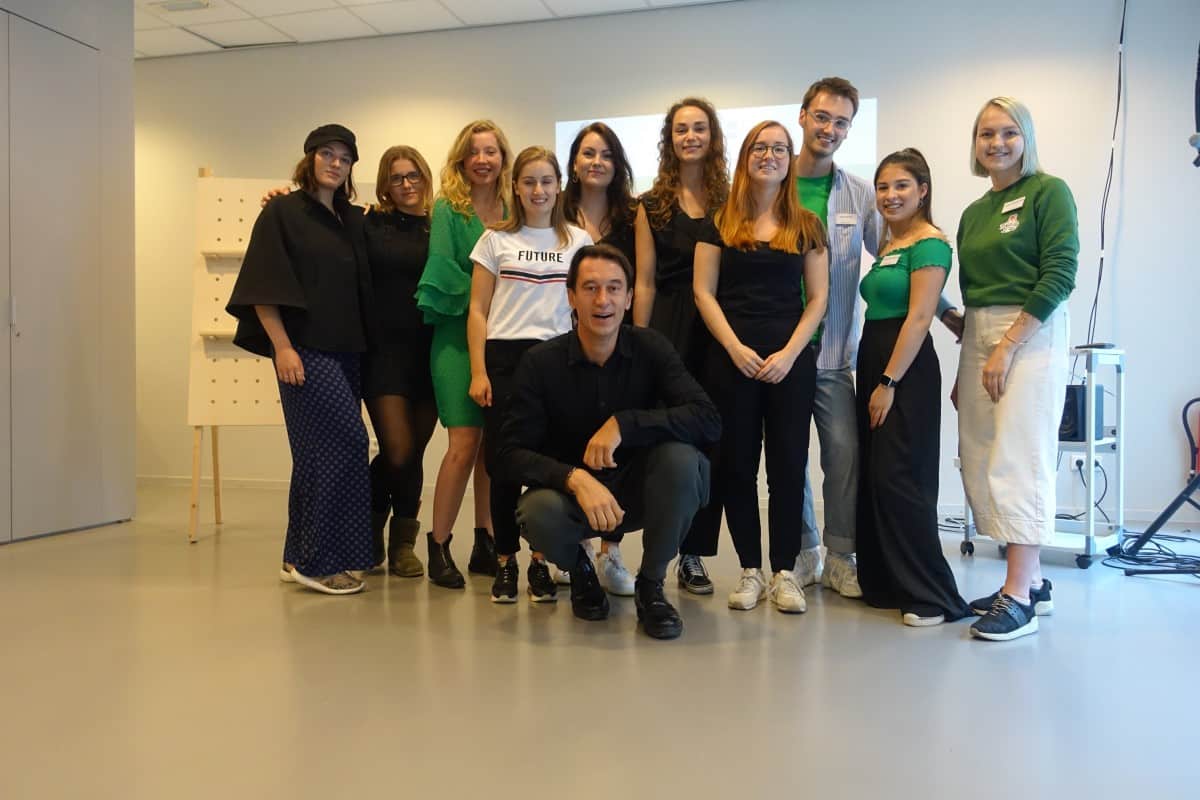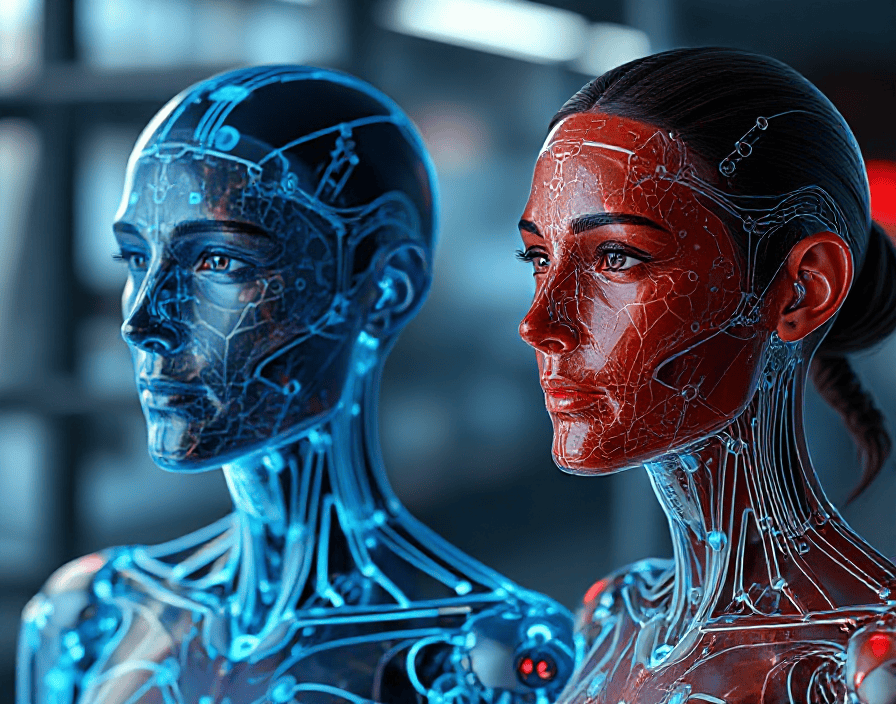
Of course, there is a huge difference between a computer and the human brains. “But why do we keep on framing this as a struggle? Why not focus on the opportunities that arise from this new era?” Koert van Mensvoort, the founder of Next Nature Network, is absolutely clear in his introduction to the pitches of the Fontys International Lifestyle students: we’d better look at the chances of collaboration between man and bot. “Even more so, let’s find the hubot-jobs of the future.”

Van Mensvoort’s Hubot project has been developed in 2017 and in the meantime, the connecting exhibition has been shown in all major Dutch cities, as well as abroad. Since the end of 2018, Van Mensvoort is a guest lecturer at International Lifestyle Studies. As part of his task there, he has challenged his students to come up with some new examples of human-robot cooperation. In short: he wants to find the new hubots, so his ‘job agency for humans and robots’ can expand. The past weeks, he and Pierke Hulshof have coached the students in their work, which they now present publicly for the first time.
Van Mensvoort has a warning for his audience: don’t be too sure about the wages you can earn with the jobs as we know them. “I think there is a reason to believe that in a few years time, a waiter can earn more than a lawyer, and a nurse will be valued higher than a surgeon.” It’s simple, Van Mensvoort says. “If you need surgery, you just want the most precise way to deal with it. If that’s one of those Davinci robot surgeons, that’s okay, I don’t see what they are doing anyway. But when I am conscious again, I need a human being: a nurse. And did you know that there are computerized lawyers, that automatically challenge your parking tickets?”

Today’s hubots range from lifestyle experiencers to personal data brokers and robo-beekeepers. First up are Mallory Wever, Anna Simakova and Esley Sevil with their Life Filler. “We all know we will grow older and older. But the world changes, so we have to adapt. We will have more time, but do we know what to do with it? What’s your lifestyle? Your purpose? What direction do you choose? Our Life Filler will offer you the ultimate scenario for your future.”
Hanna Jertz invented the Ear Me Plug: “It’s the perfect tool for students. No, I won’t be able to disclose the results of an exam for you, but the Ear Me Plug is a very helpful assistant. Thanks to these earplugs, all your thoughts will immediately be stored into an Evernote-like document. So even when you are on a bike, or in your shower, you can save all your precious thoughts. The only limit is your imagination.”

Martsje Oldenkamp takes us back to the town she grew up in: Delft. “You know, it’s a pretty old town, with lots of canals. But the problem is, everybody’s bike keeps falling into these canals. In Delft alone, more than 200 bicycles per year disappear under water. I used to get mine back using a hockey stick, but this was quite difficult. So that’s where the Handy Bike comes in: a hand on a stick that enables you to fetch anything that fell in the canals.”
Great ideas, Van Mensvoort admits, but just not good enough for one of the prizes. Van Mensvoort was asked to award €250 and €500 to the two best projects of the day. On top of that, there’s a €125 audience prize.

Julie Maas’ Lifestyle Experiencer turns out to be best in winning the hearts of the audience, and to top that off, she also receives the overall second prize. “Empathy can save the world”, she starts her pitch. “But who of you has actually been able to totally place himself in somebody else’s shoes? I mean, in our opinions, there’s a lot of black and white, but very little grey in between. How can we really feel what somebody else is experiencing? The answer is: the lifestyle experiencer can do this for you.” Julie has brought a belt, glasses, a wrist band, shoe soles and earphones: together they offer the technology that almost literally connects somebody to another person’s feelings – and their biases. “Empathy is a human quality, but technology can help us enhance our senses. That’s what a lifestyle experiencer really adds. And as a lifestyle professional, I will be designing concepts for a wide variety of situations.”
The first prize (€500) is awarded to Michelle Hermans, Tara Verstappen and Ilona Zeebregts, who really were on a roll during the project. The result: no less than four new hubots have arisen from their brainstorms: a personal data broker, a robot tax consultant, an air traffic controller and a robo-beekeeper. Van Mensvoort is immediately impressed by the variety of their project, but also by the depth in which each of the four has been developed. Asked for a single example, the guest lecturer chooses the beekeeper. The students: “One-third of our food needs pollination. And that’s why bees are so important to us. Bees add a lot to society as a whole, but also to our economy. I mean, they all do this important work totally for free!” The students decided to combine real bees with a swarm of bee drones. “Technology and nature can merge. The bee drones – flying around thanks to their solar panels – live in the same beehive as the real bees. This way they save humanity – and a lot of money.”





